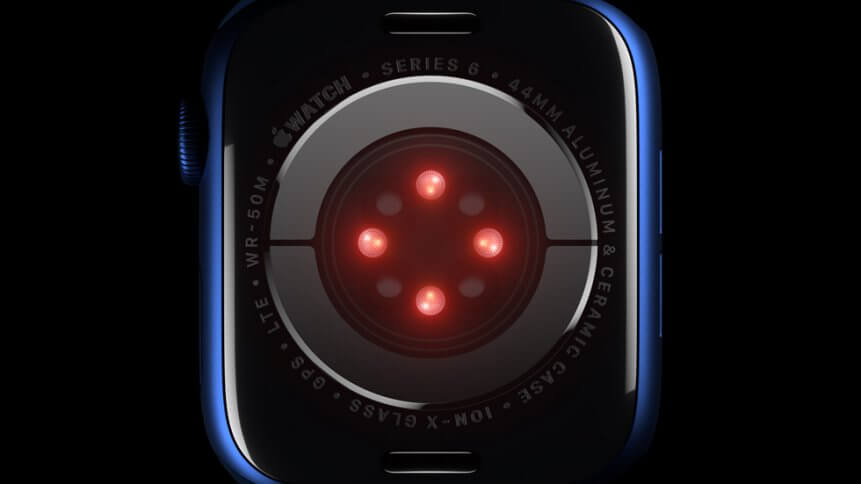4 ways the Apple Watch 6 could improve your work-life balance

Wearable technology’s usage has surged in the past few years. The market was worth a staggering US$23 billion in 2018, according to GlobalData, but could continue its rise to hit US$54 billion by 2023.
The market has been led by the popularity of smartwatches, thanks to high smartphone penetration and low-energy connectivity technology such as Bluetooth. Wearable tech arguably reached ‘peak-hype’ in 2013 with Google Glass, whose short life-span risked painting wearables in the light of fad technology.
Today, while wearables have enjoyed more consistent success among consumers, particularly in regard to fitness trackers, the wearable technology market is seeing increased popularity among businesses.
With technologies like AR headsets limited to specific use cases, and smart glasses still some way into the distance, Apple can be credited with bringing the most popular wearable technology into mainstream appeal. And, as the Apple Watch Series 6 becomes available, TechHQ explores how the core features of the smartwatch could help us in our daily approach to work, especially given the challenges of 2020.
Unveiled as part of an online-only event, the latest line of smartwatches continues Apple’s push into health tracking, as the world’s largest firm continues business as usual during the global pandemic.
The smartwatch’s exterior continues with the same design language found in previous models. Another major upgrade in the Apple Watch Series 6 is the new S6 chipset, which uses a dual-core processor based on the A13 Bionic processor found in the iPhone 11.
# 1 | Blood oxygen
Arguably Apple Watch’s biggest new feature, added watch sensors utilize a series of LEDs on the bottom of the watch to shine infrared and red light through the wearer’s skin and into their blood vessels. The color of the light then reflects and gives the watch a picture of oxygen saturation levels in the blood, otherwise known as SpO2.
Although Apple states it’s not a medical tool and should only be used for monitoring general fitness or wellness, the blood-oxygen scanning feature can help employees keep an eye on their health in more detail. With the help of data analytics, the feature is faster than other devices, and the entire process takes about 15 seconds. Wearables using sensors that complement AI with big data tools to capture comprehensive biological data could in effect help medical professionals to predict diseases early, facilitate predictive care, and monitor patients remotely.

The Apple Watch Series 6’s SpO2 function. Source: Apple
Some who have suffered from COVID-related pneumonia showed no outward symptoms until their blood oxygen levels were dangerously low. A wearable like the Apple Watch Series 6 can routinely monitor a user’s blood oxygen levels which could help detect COVID-19 – or other conditions that deprive the body of oxygen – before more severe symptoms set in.
# 2 | Mindfulness
Just recently, Microsoft Teams introduced a ‘virtual commute’ feature — the idea was to help workers help to switch off between work and home life, as remote work continues to blur boundaries. Helping to combat burnout, the Apple Watch comes with a host of mindfulness apps that can be used to help with breathing, stimulating the body’s parasympathetic nervous system, and trigger calm responses that decrease heart rate, blood pressure, and muscle tension.
Built into the watchOS is the Breathe app, which uses proven techniques to reduce stress and help the wearer relax. The app uses haptics to signal when to inhale and exhale, and also reads your heart rate during one-minute mini sessions.
Going a step further with mindfulness are meditation apps within the Apple Watch Series 6. Two of the most polished and robust apps are Headspace and Calm, which both feature-limited free content with subscriptions to unlock everything.
A great feature in the Headspace Apple Watch app is an SOS three-minute “Feeling Overwhelmed” meditation that you can quickly pull up anytime you need it. This can be a useful tool for employees needing a quick way to tune out and re-focus, before diving into the next task.
# 3 | Voice dictation
Responding to notifications has been another key win for apple. The Apple Watch Series 6 allows for a response to incoming chat messages with accurate voice dictation or intuitive “scribbling” by using finger swipes to “draw” individual letters on the screen.
The voice dictation on Apple’s software is the fastest and most accurate when in comparison to other brands and can be an essential tool when needing to respond to emails on the go. Smart tools like this can help keep businesses at the cutting-edge of communications while providing employees with the ability to compose messages without needing to type. In an era when going contactless is proving to be more important than ever, more employees are looking at how they can reduce touching shared devices in a bid to avoid the spread of COVID.
In addition, the watchOS 7’s hand-washing detection will trigger whenever it hears the sound of soap suds and water running on your hands to start a 20-second timer that notifies you when you’re done.
# 4 | Noise and sleep tracking
The Apple Watch can now finally track sleep. With the Apple Watch Series 6, you can set a specific bedtime on the Watch and it will automatically go into Sleep Mode at the exact time every night. While it can be tough to measure the accuracy of sleep tracking, users have said it has been able to correctly identify when they fell asleep and when they woke up. Tracking sleep can help users obtain high-quality rest in preparation for the next full day of work while maximizing productivity ensures businesses maintain a competitive edge.
Originally introduced with watchOS 6, the noise app measures ambient noise levels around you to determine whether they are at a safe level. In their latest iteration, the feature has now been expanded for use with earbuds or headphones when using the Apple Watch Series 6. If you are on your commute on the way to work and you enjoy blasting music, the app can keep track of how healthy the sound levels are.
Future-proof tech
Futureproofing yourself in the business world with the most modern version of the Apple Watch could be the best option. It will be supported for longer with updates, possess longer battery life while offering the widest range of features.
While Apple does not want you to use the Apple Watch Series 6 as a medical device, being able to take regular ECGs, or having a background monitor of your blood oxygen is a useful tool in measuring your current state to push performance to optimized levels, while the heart rate alerts bring peace of mind too.
Employees benefit from the mobility and interoperability that comes with wearable devices
As wearable tech continues to break ground technologically, wearable devices not only transform consumer lifestyles through mass adoption but also provide added efficiency and benefits to companies and industries utilizing them. Employees benefit from the mobility and interoperability that comes with wearable devices to increase productivity levels.










